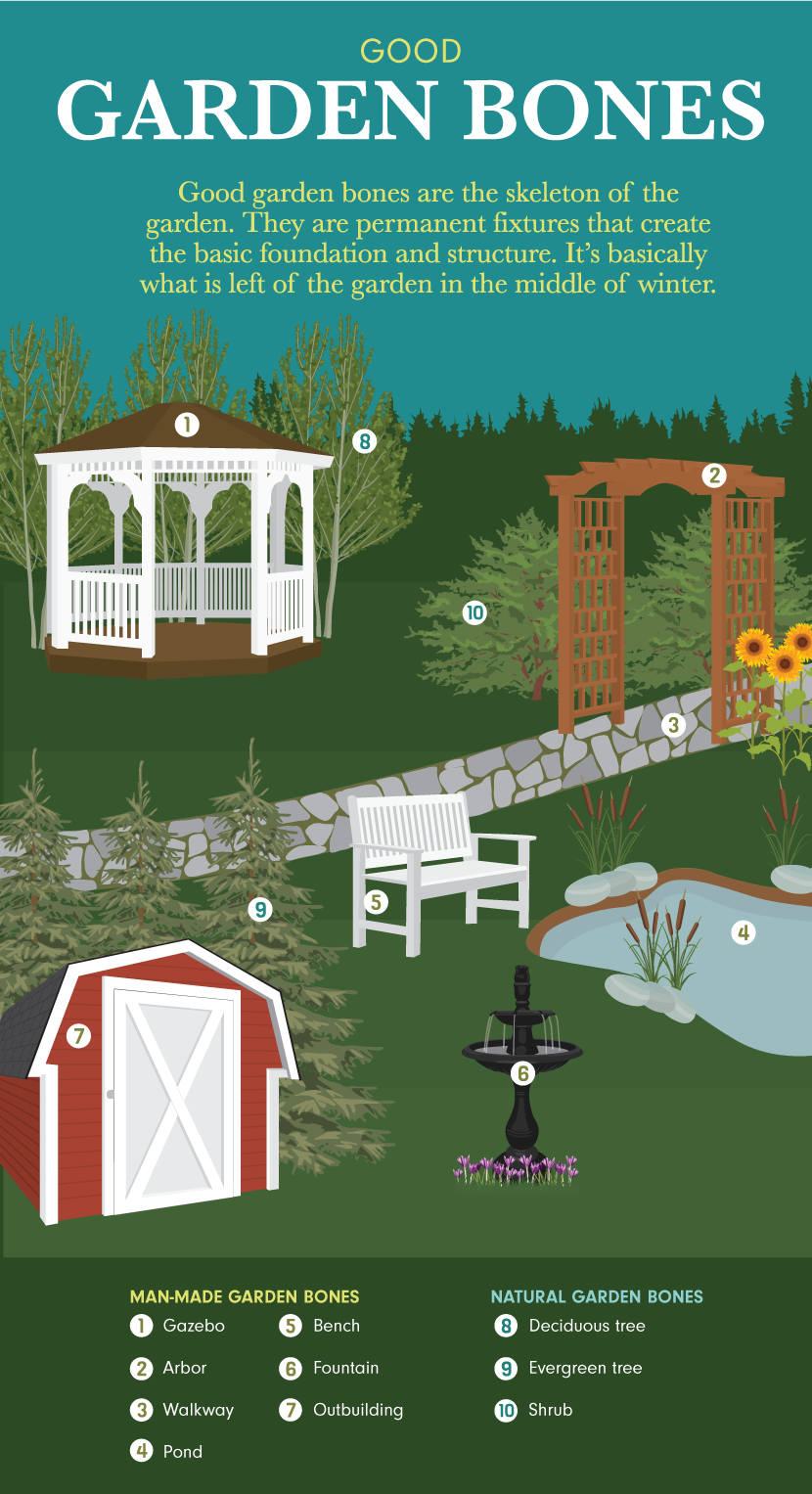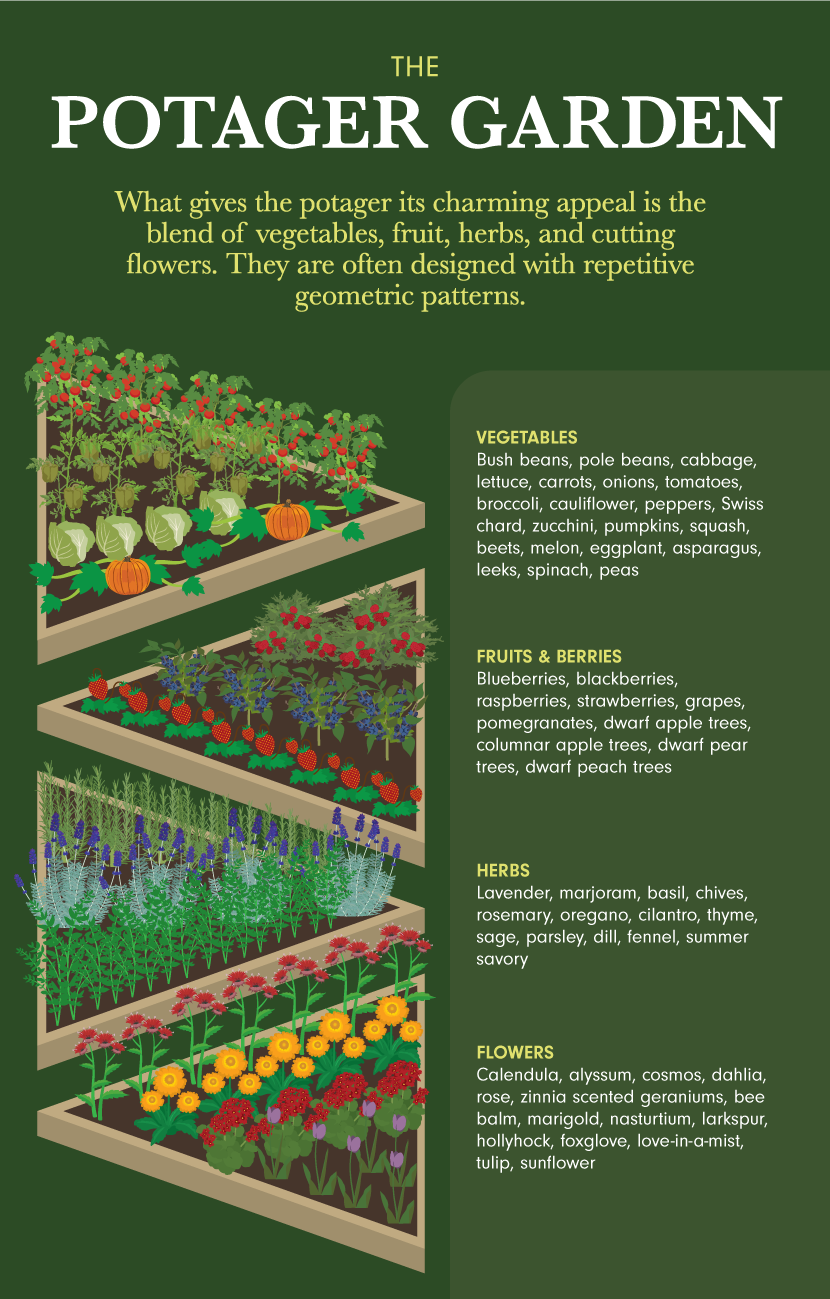Written by Chris McLaughlin
We all enjoy the food, beauty, relaxation, and entertainment that gardens provide. But have you ever thought of planting a garden as a form of self-expression? A garden space that reflects your personality and style is a wonderful way to create something joyful and unique.
There are as many garden styles and themes as there are gardeners, and inspiration is everywhere. Ignore gardens in movies and television since they are usually unrealistic and therefore unattainable. They’re beautiful but bogus.
Magazines and books are a good place to start. Check out what is growing well in your neighbor’s yards, and peruse public gardens or nurseries. These places are the real deal, and they’ll give you a better idea about what grows happily in your area.
Once you have gathered some ideas from your local area, determine which type of garden calls to you personally. This idea goes well beyond choosing whether to plant vegetables or flowers. Think in terms of style and theme.
Can you remember the first garden that impressed you? It might have been a grandparent’s comforting vegetable garden, a farm where you ran through tall sunflowers, or perhaps a castle where the grounds were sculpted into jaw-dropping formal designs. Very often, our favorite garden lies in our childhood memories.
If you can’t live without fragrance, roses are just the tip of the scented iceberg. If you purchase weekly bouquets for your home, a cutting garden could be perfect. If your personality is structured and elegant, formal might be the way to go. If you’re more laid back, a potager or cottage garden might be the answer.
There is no right or wrong way when it comes to expressive gardening. However, a general “feel” certainly shows up among the themes.
Formal Garden Styles
If clean lines and symmetrical shapes bring a smile to your face, a formal garden style will make your heart sing. Plants that are used in a formal setting tend to be pruned to basic geometric shapes as opposed to letting them fill out into their natural forms. Formality depends on neat edges and requires more maintenance than any other garden style, but it can be worth it.
Developer foundation planting: The developer foundation look is often unintentionally created when a housing developer pours cement into driveways, sidewalks, and any other perfectly shaped path. There may also be a rectangular walkway garden bed or two. The lawn is rectangular or perhaps curved, but it’s strictly contained by cement or other edging. If this describes your home, you already have the bones for a garden with a formal feel. As you choose your plants, consider what will be crisp, geometric, sculpted, groomed, refined, and classic.
Rose garden: Look for long-caned tea roses and grandifloras to help bring shape to your rose garden. Fill in spaces with floribundas and weeping tree roses. In fact, a garden devoted entirely to roses has a regal feel of its own, regardless of the varieties of roses. Planting them inside a geometrical shape just brings the look home.
Knot garden: People in sixteenth-century France and Italy incorporated knot gardens into their mansion landscapes so they could enjoy the view from upper-story windows. Knot gardens are primarily designed using short hedges to produce bold geometric patterns. Each design intertwines with another to tie the garden together, hence the name knot garden. My favorite plants to incorporate into this theme are semi-woody herbs to help create the design, such as rosemary, lavender, thyme, and oregano.
Formal herb garden: Like the knot garden, semi-woody herbs such as lavender, rosemary, sage, oregano, and thyme will take on a formal feel when they are pruned and trimmed regularly instead of being allowed to wander.
Raised vegetable garden: A formal garden doesn’t need to exclude vegetables. Veggies can fit right in if you remember geometric shapes and clean lines. Clean lines doesn’t necessarily mean straight lines, by the way. Curvy lines feel formal when the plants inside those curves are kept groomed and shaped.
In terms of vegetable gardens, raised beds always bring an intentional feel, as do vegetables evenly lined up throughout the beds. Raised beds are most often square or rectangle, and these shapes can be emphasized by being raised up from the ground.
Casual Garden Styles
If you prefer a more casual or romantic aesthetic, the following garden ideas are perfectly suited for an unplanned feel. A good tip for informal gardens is to utilize climbing or tall plants to hide fence structures. This helps create the illusion that the garden is endless.
Cottage flower garden: Cottage gardens are probably the first thing people think of when they think of casual gardens. They may seem routine, but there’s a reason they are so popular. Old-fashioned flowers such as hollyhocks, foxgloves, peonies, violets, roses, love-lies-bleeding, love-in-a-mist, pinks, hydrangeas, lavender, and anemone are right at home in this setting. Pathways throughout a cottage garden are often stepping stones, brick, or crushed granite to help facilitate a cozy, intimate feel.
Potager: The potager is France’s answer to the kitchen garden. The French have gotten creating beautiful gardens of food down to an art by combining vegetables, herbs, fruit, berries, and cutting flowers while incorporating repetitive geometric patterns. The charming potager pulls double duty by providing food and beauty for the home.
Woodland garden: If you’re working with an area that receives light to medium shade, you can pull off a woodland garden, even in suburbia. Great plants for woodland gardens are bulbs, ferns, wood anemones, heucheras, bleeding hearts, columbines, grasses, sedges, deciduous trees, and evergreen trees.
Meadow: Most gardeners don’t have the land to produce a true, naturalized meadow. That said, it’s entirely possible to get the same effect by planting species such as native grasses, wildflowers, bulbs, willowy black-eyed Susans, and hardy geraniums to create a mini-meadow of your own.
Wildlife garden: The plants necessary for creating a wildlife garden might seem obvious. However, most people only consider nectar (food) plants to attract butterflies, bees, hummingbirds, etc. Please don’t forget the plants insects and birds need to lay eggs, take cover, and feed young larva and hatchlings. Native plant species are perfect choices for a wildlife garden.
P.S. Don’t believe the hype about wildlife gardens always looking over-grown and unkempt. With a little strategic pruning, both you and the butterflies will admire the view.
Rock garden: Rock gardens are easy to care for, and they’re often tolerant to droughts once the plants are established. They’re easy to create using plants such as sempervivum, yarrow, phlox, lewisia, sedum, stonecrop, and alpines (rock plants). Be sure to sink some large rocks at least halfway into the ground for the most authentic look, and make rock groupings in odd numbers.
Theme Gardens
Theme gardens are pulled together by plants that are connected in ways other than general vegetables, flowers, or plain foundation plantings. They are often more creative, playful, and specific to the gardener.
Some garden themes include the following:
- An apothecary garden planted with medicinal plants for home remedy lovers.
- A Shakespeare garden filled with the plants William Shakespeare romanticized in his works for avid readers or writers.
- A garden devoted to a favorite team’s colors for sports fanatics.
- A garden with flower varieties that have the first names of each family member for families.
- A garden devoted to plants that attract butterflies or hummingbirds for wildlife lovers.
- A flower garden planted with bees’ favorite nectar sources for beekeepers.
Themed gardens are one of the best ways to incorporate your personality, interests, and hobbies into the landscape. You won’t need any professional help, and the possibilities are truly endless.
Source: Fix.com Blog
 Pride News Canada's Leader In African Canadian & Caribbean News, Views & Lifestyle
Pride News Canada's Leader In African Canadian & Caribbean News, Views & Lifestyle








